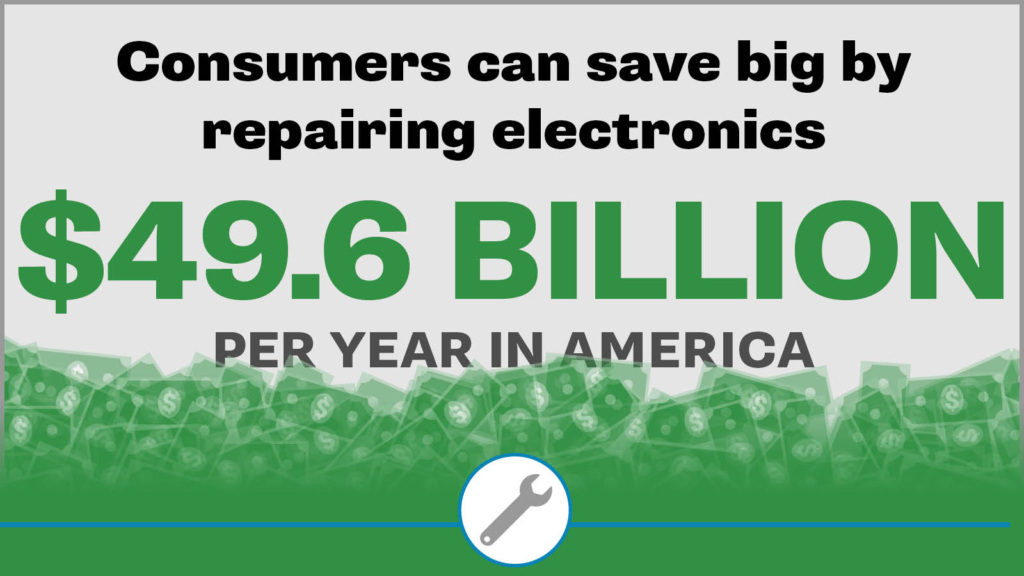Media Contacts
Senior Director, Campaign for the Right to Repair, U.S. PIRG Education Fund
Director of Media Relations, The Public Interest Network
[email protected]
BOSTON — Americans’ dependence on rapidly replaced electronics and appliances comes with a giant price tag, according to a new report by U.S. PIRG Education Fund entitled “Repair Saves Families Big II.” The report estimates that the average U.S. household could save approximately $382 per year by repairing its electronics. This adds up to a total annual savings of about $49.6 billion across the country.

Photo by Public Interest GRFX | TPIN
“The rate at which we are buying and trashing electronics is staggering,” said Nathan Proctor, author of the report and the senior director of U.S. PIRG Education Fund’s Right to Repair campaign. “There is a really simple solution: Fix things instead. Not only will you do the planet a favor, you can save a lot of money at a time when many household budgets are feeling pinched by rising prices.”
The new report updates research released two years ago (based on data from 2019), which found that American households spend approximately $1,480 annually purchasing new electronic products — appliances, phones, computers and more. The latest data (2021) shows that spending rose 19% in those two years, and that the average household spends $1,767 purchasing new electronic products per year.
Repair is good for our pocketbooks, but it’s even better for our planet. When we prematurely replace our electronics, we unnecessarily retire our old devices to landfills where they can leak toxic heavy metals such as lead, mercury and cadmium, and contribute to the fastest-growing waste stream in the world.
“Many consumers are shocked to find out that many repairs can be done in under 30 minutes and cost a fraction of the price of a new device,” said Gay Gordon-Byrne, executive director of The Repair Association. “The biggest limitation on the costs of repair compared with replacement is access to parts on fair and reasonable terms. Local shops can easily do the work quickly and efficiently if they are allowed to compete.”
“I know our throwaway culture costs us big, but I didn’t realize repair could save Americans some $50 billion per year — savings that would be even larger if more people fixed things themselves,” said Sustainability Director Dr. Elizabeth Chamberlain at iFixit.com, which publishes tens of thousands of repair guides. “No one should take ‘broken’ for an answer. Fixing instead of replacing is empowering. It keeps stuff out of the landfills, and it can save families an enormous amount of money.”
Repair is critical to keeping our electronic products functional without breaking our budgets. Unfortunately, manufacturers often elbow out independent repair by limiting access to the tools, parts and information we need to repair our devices. The report also notes that repair helps empower local small businesses. Instead of relying on the global supply chain to bring a never-ending supply of new stuff, repair helps us keep devices going using only neighboring resources.
“In our work to remove barriers to repair, I’ve spoken to countless repair shop owners who have been forced to turn away customers because the manufacturer refused to allow them to access the parts, tools or information needed,” Proctor added. “We need more consumers to try and fix things first, and we need to make sure that when people need help from someone else, the manufacturers can’t get in the way.”’
The full report is available here.